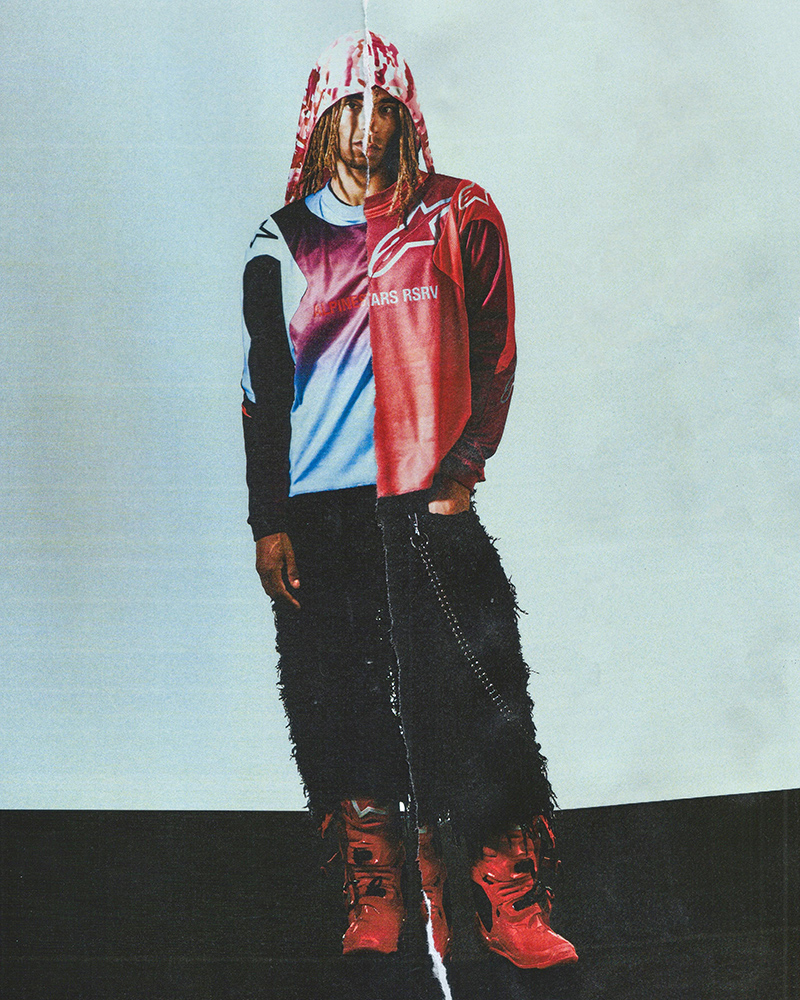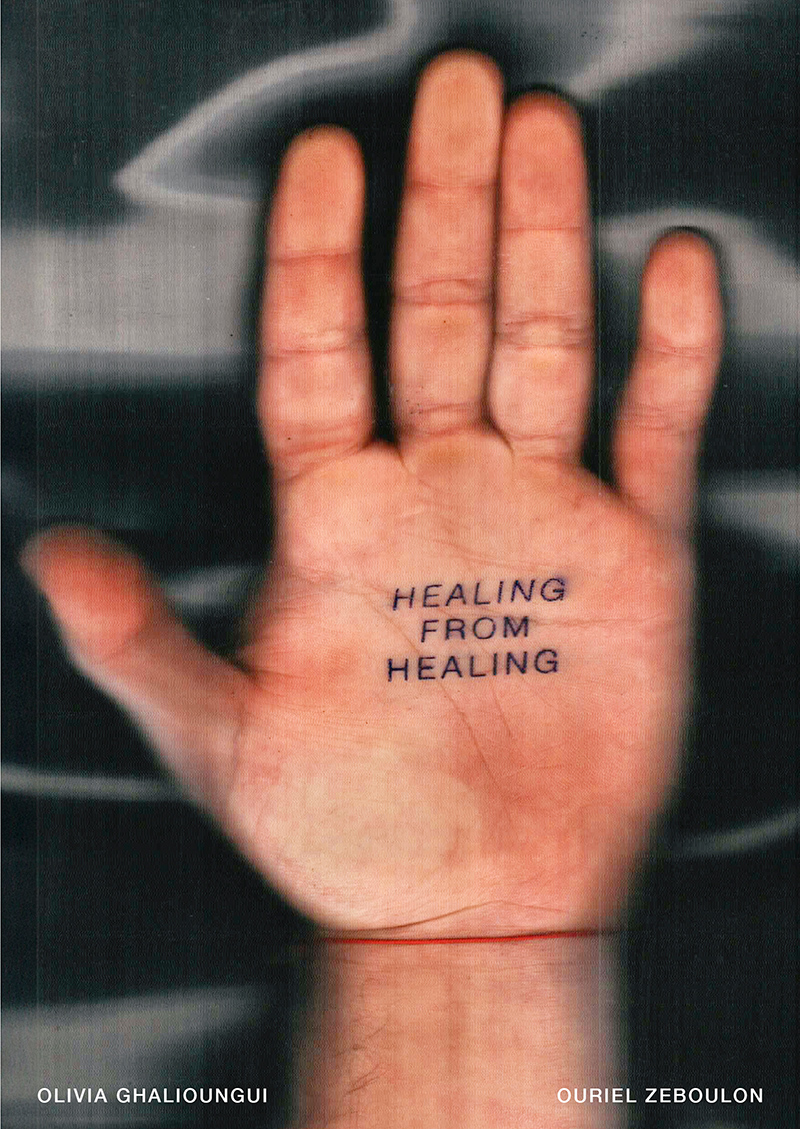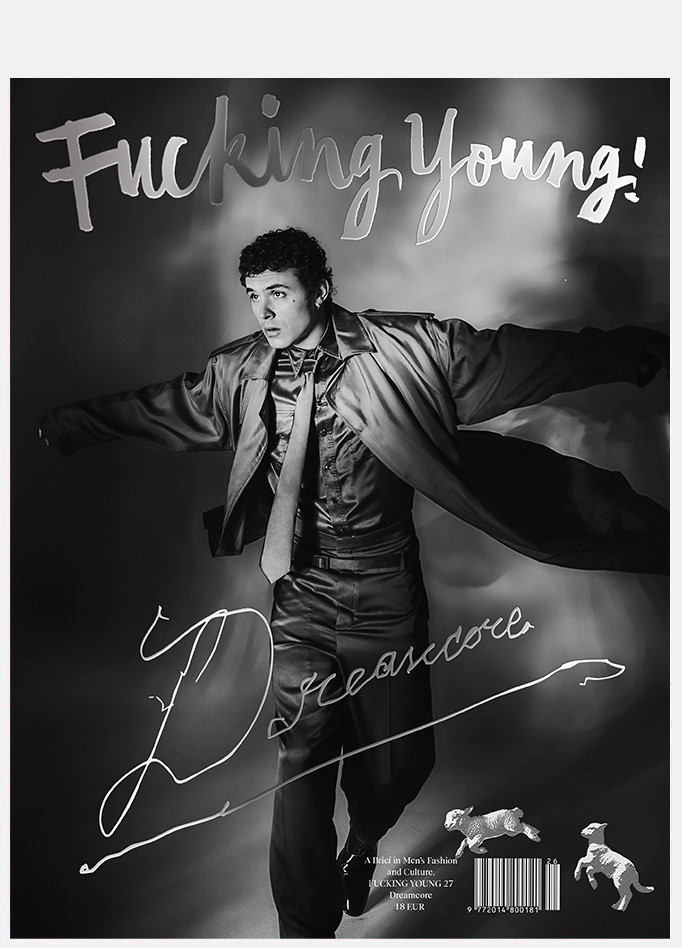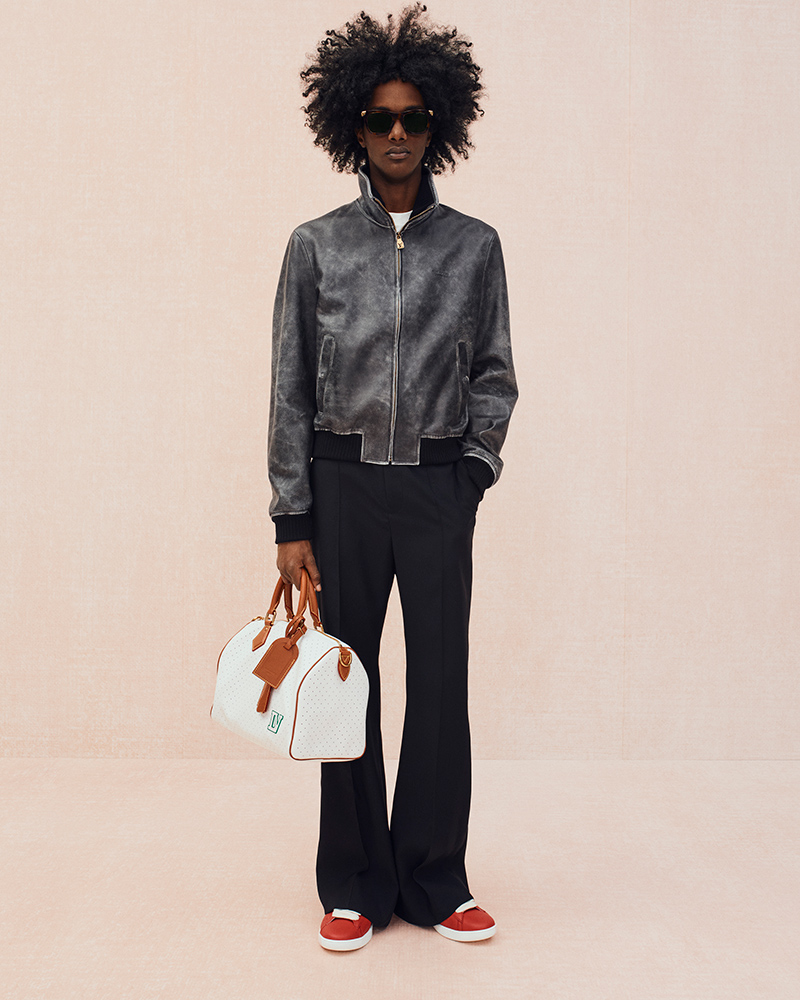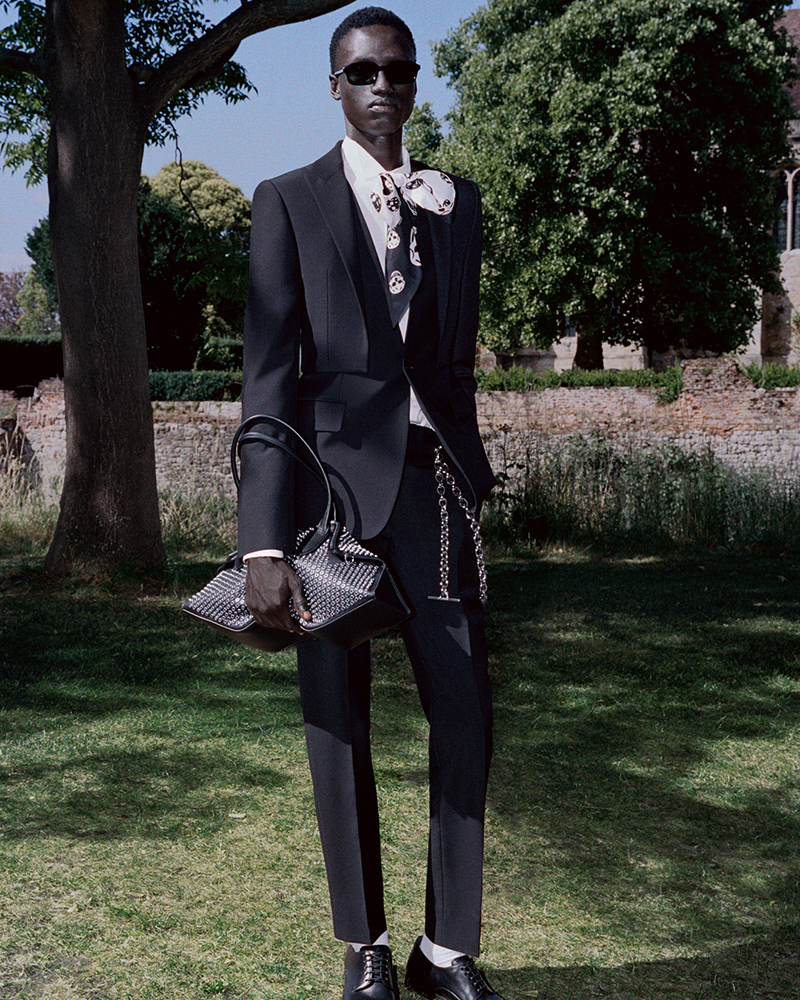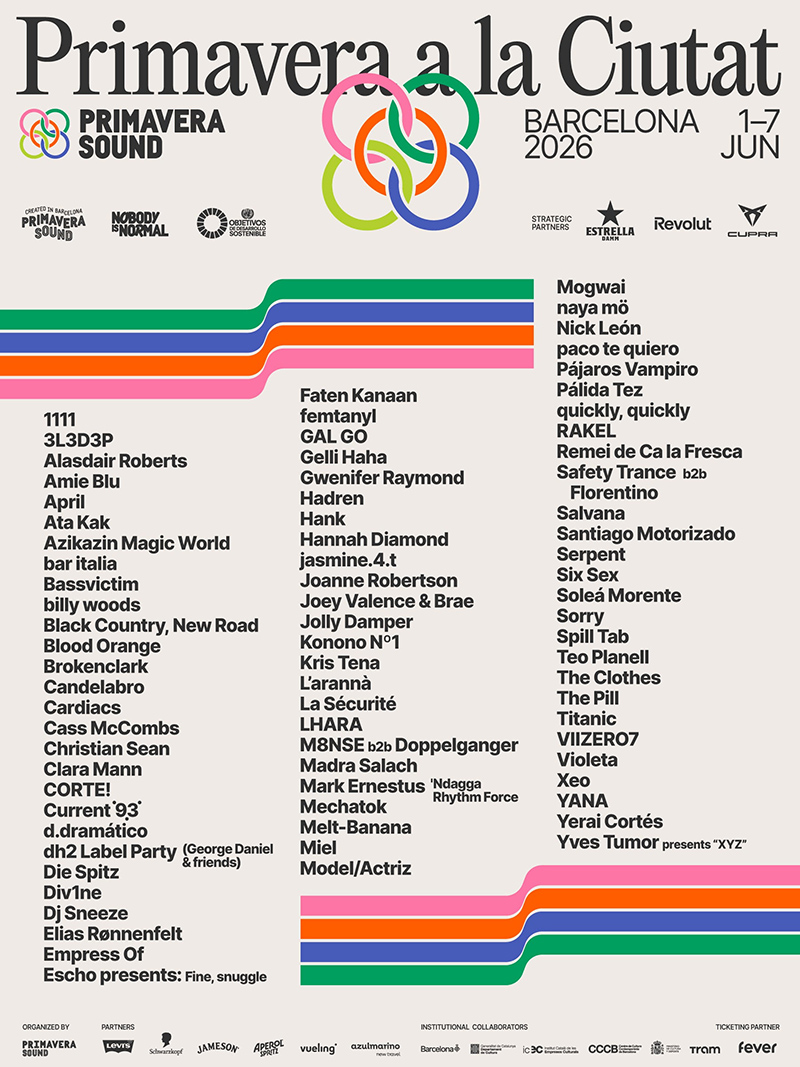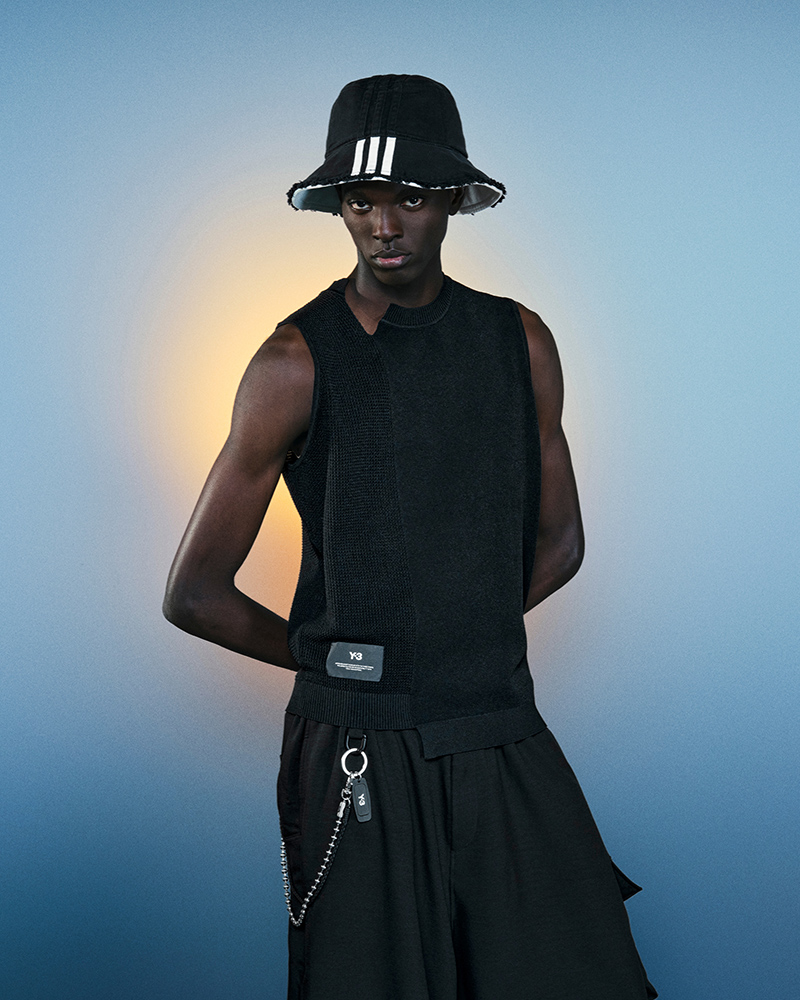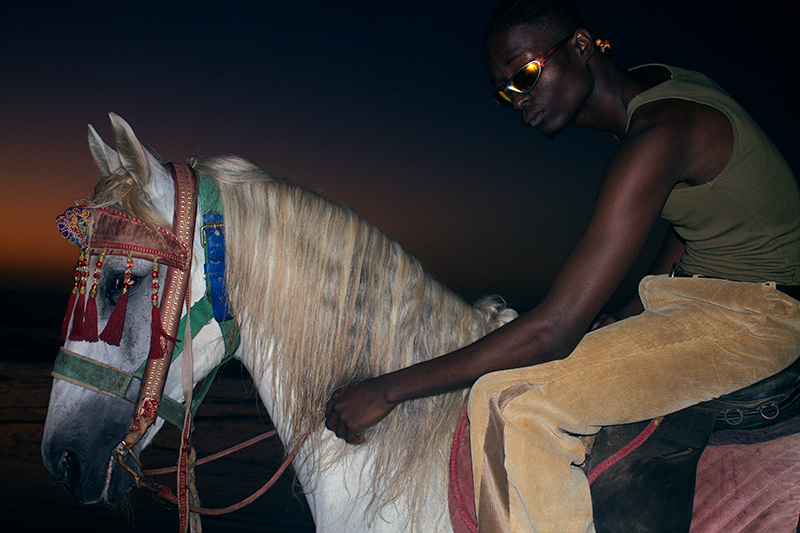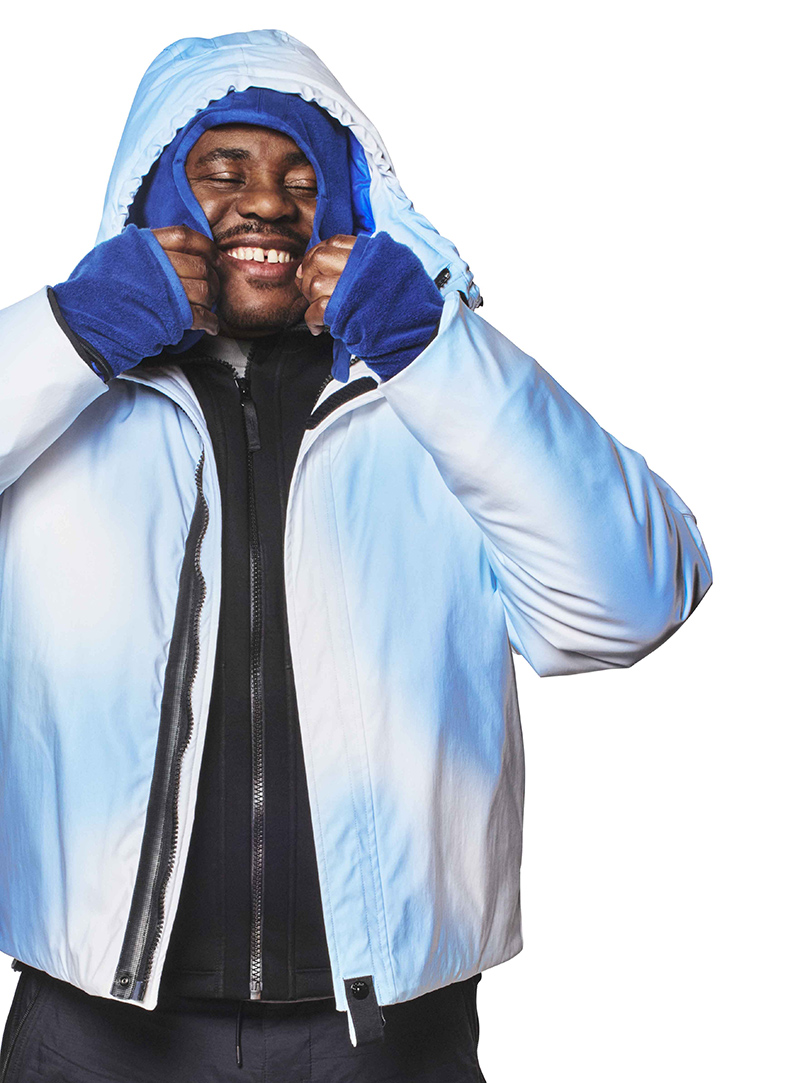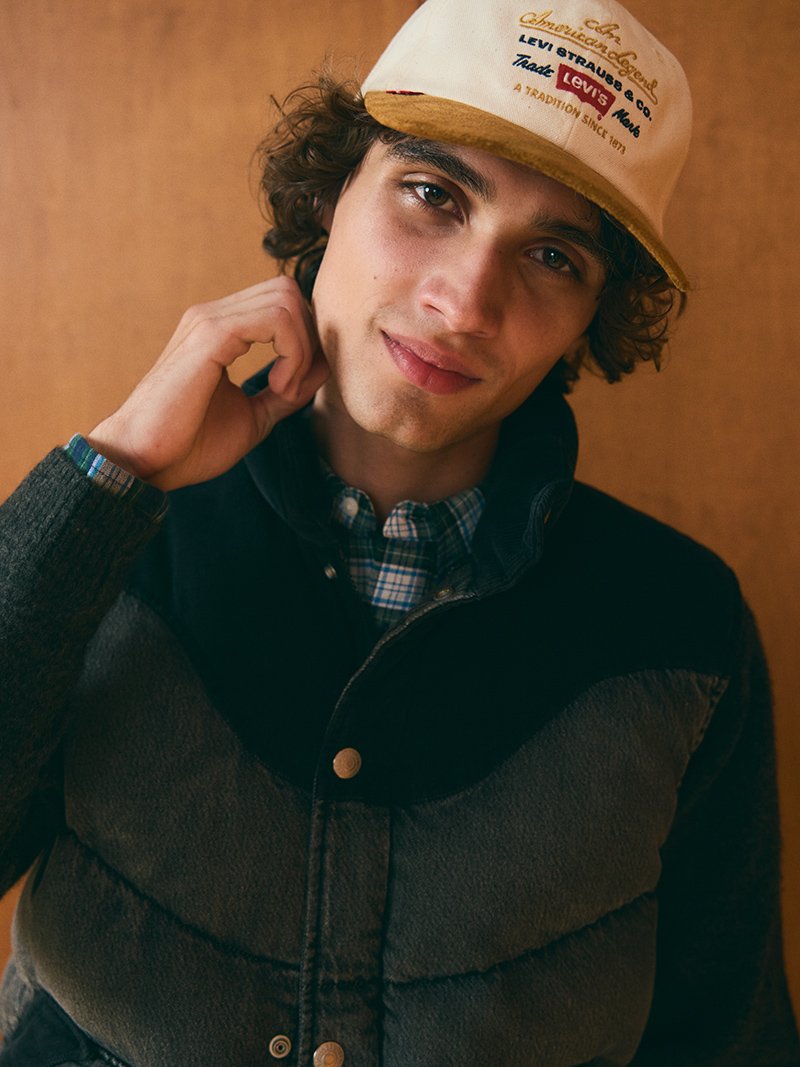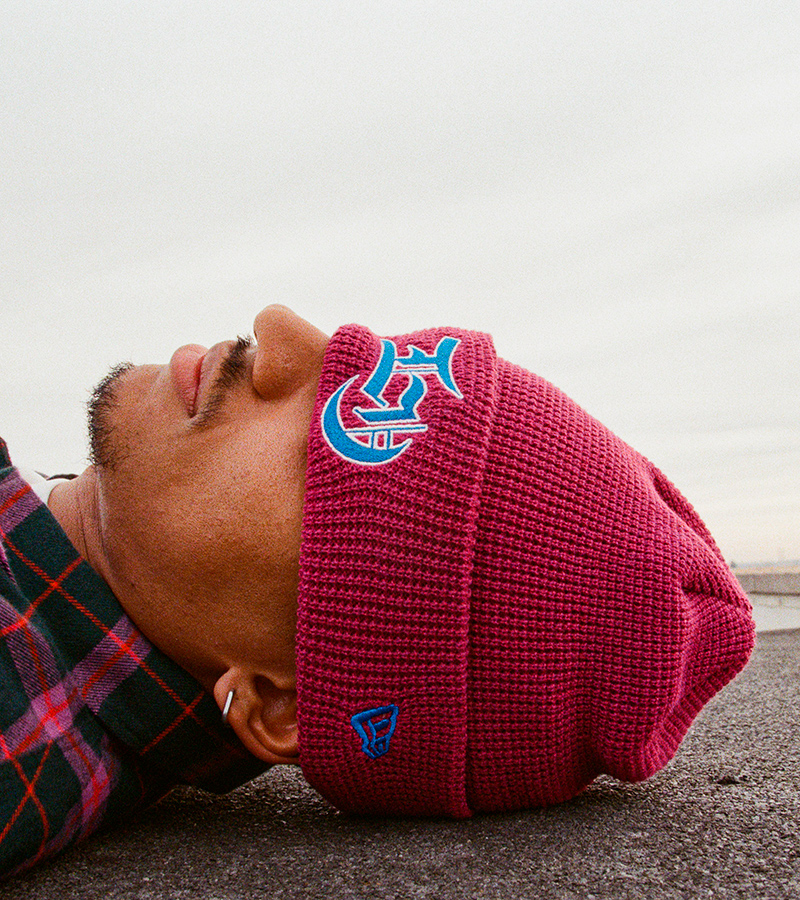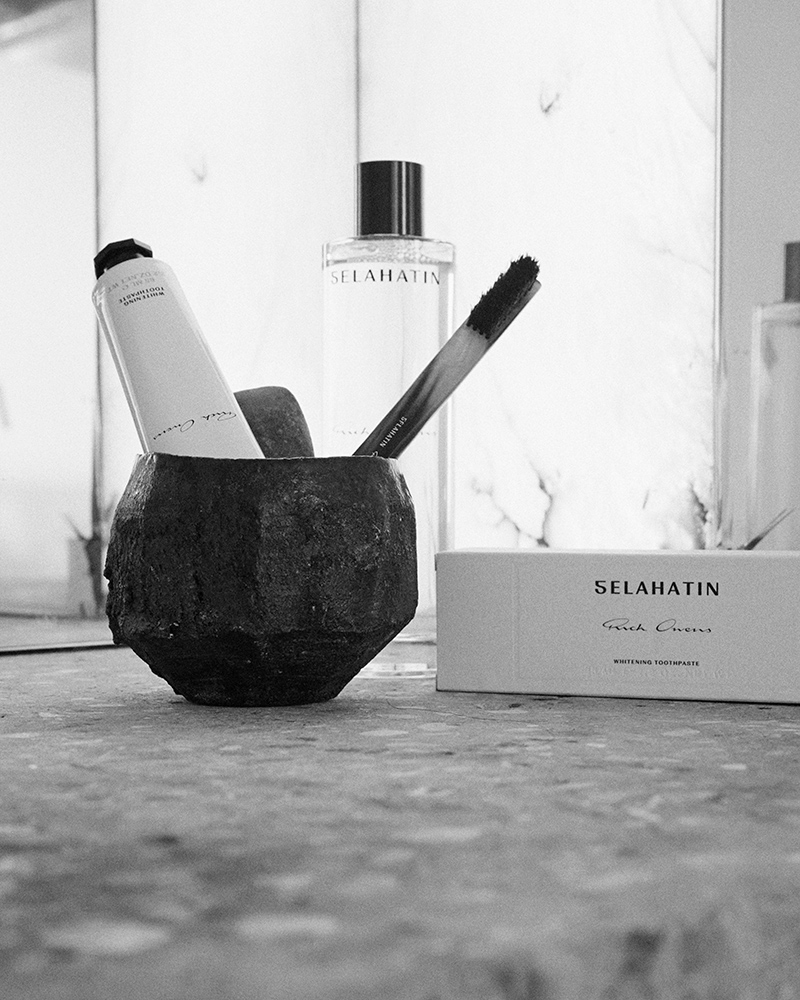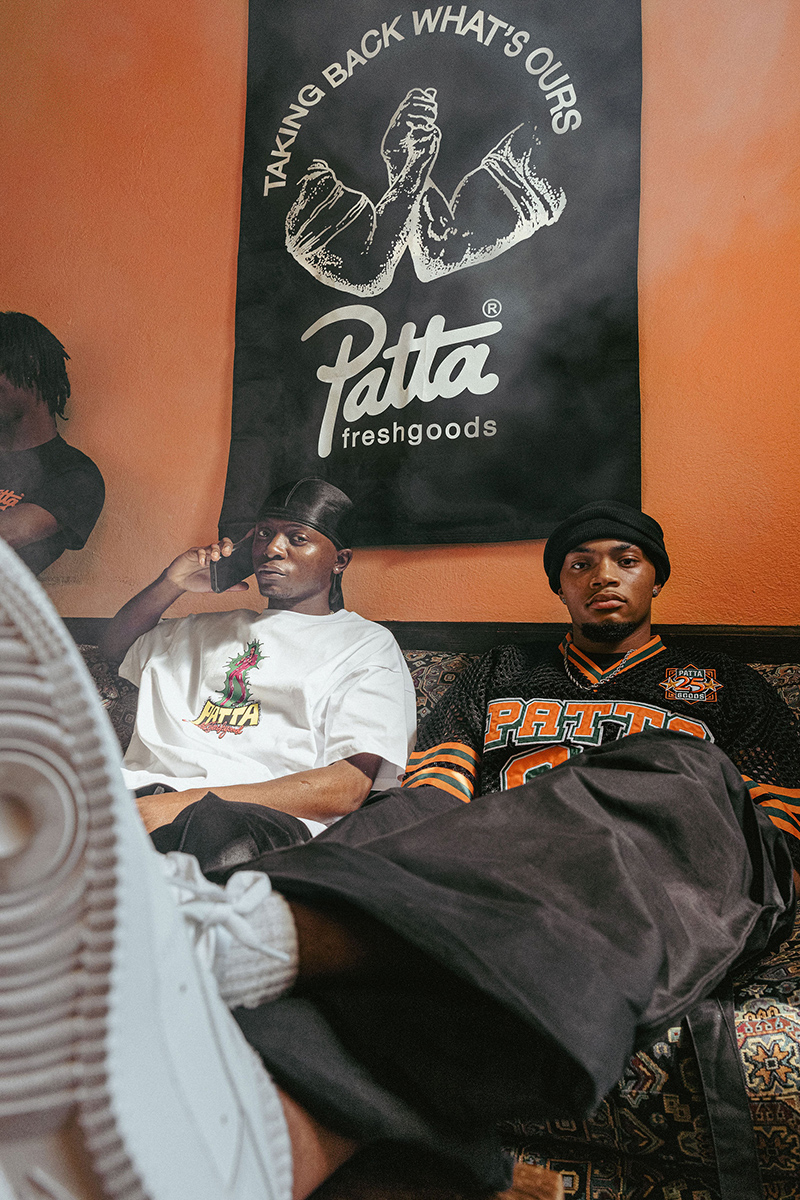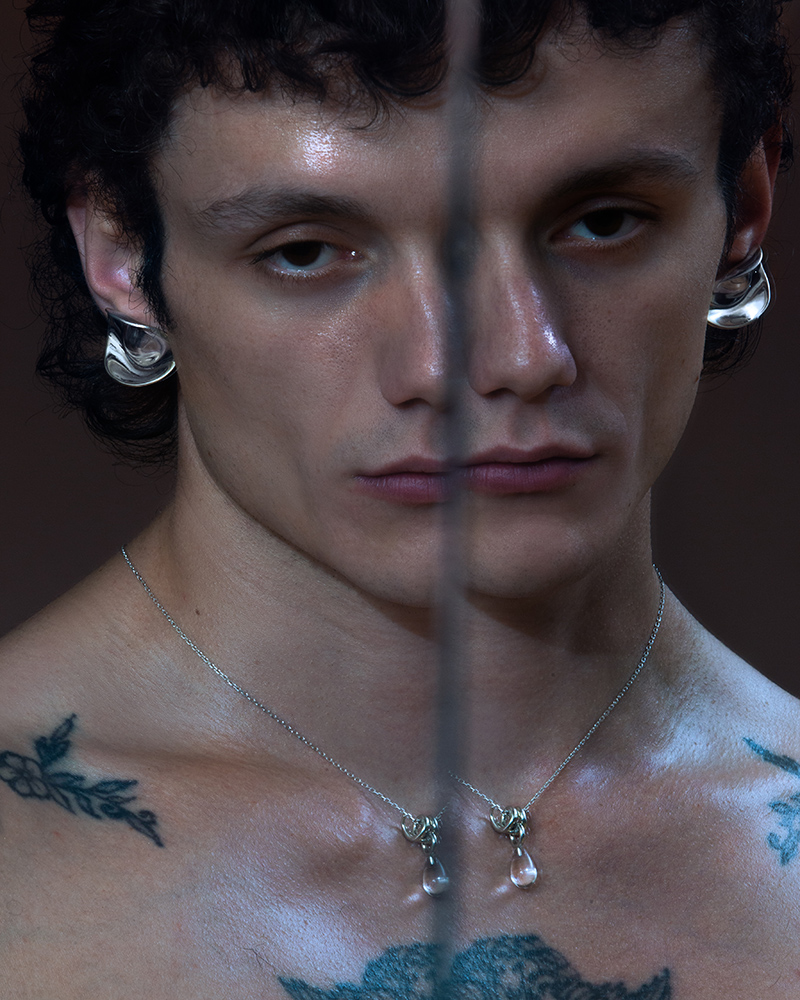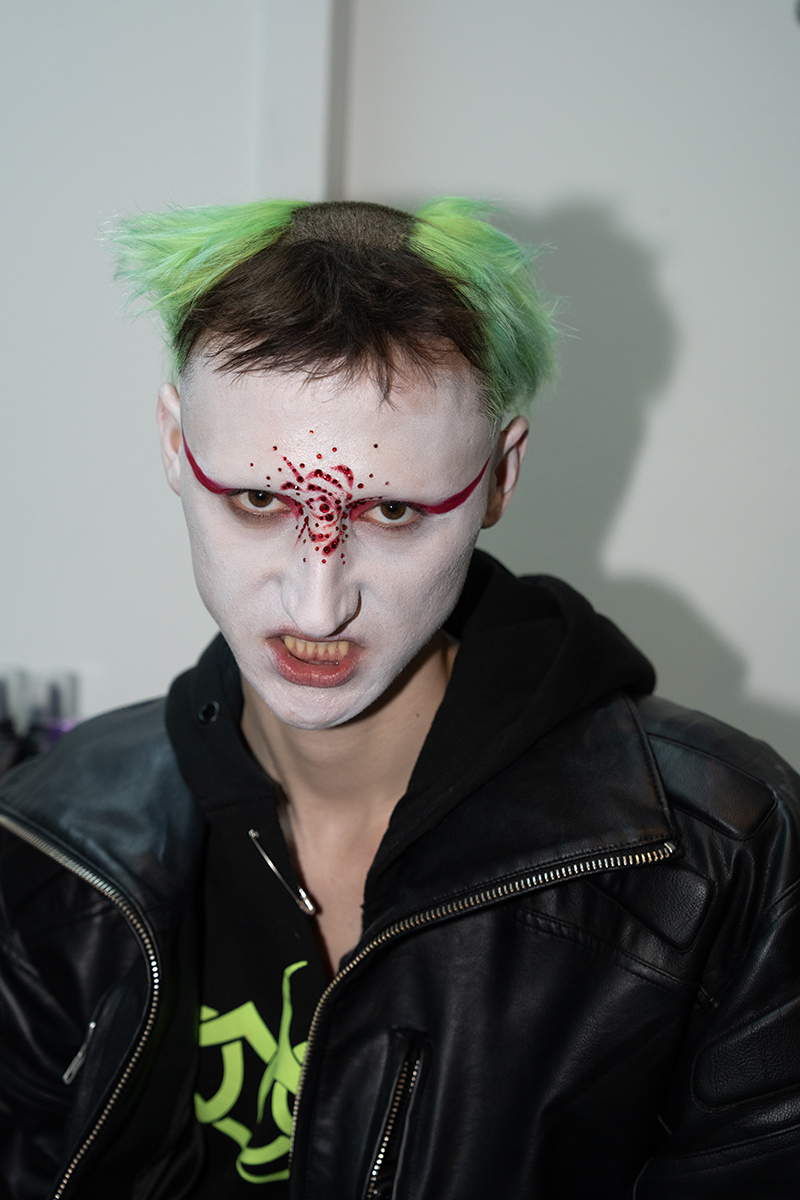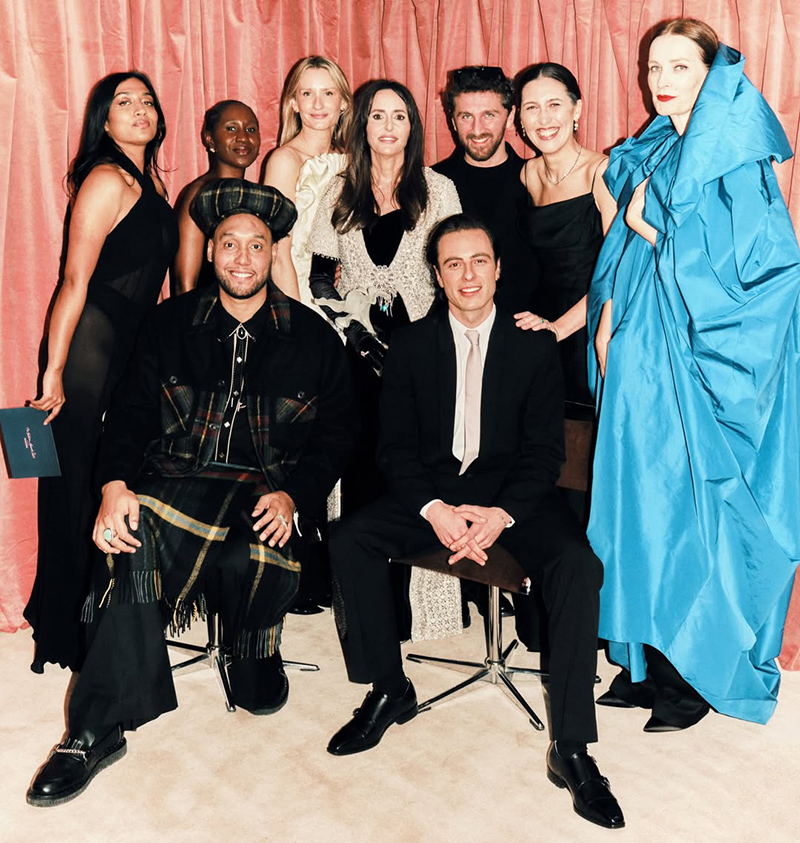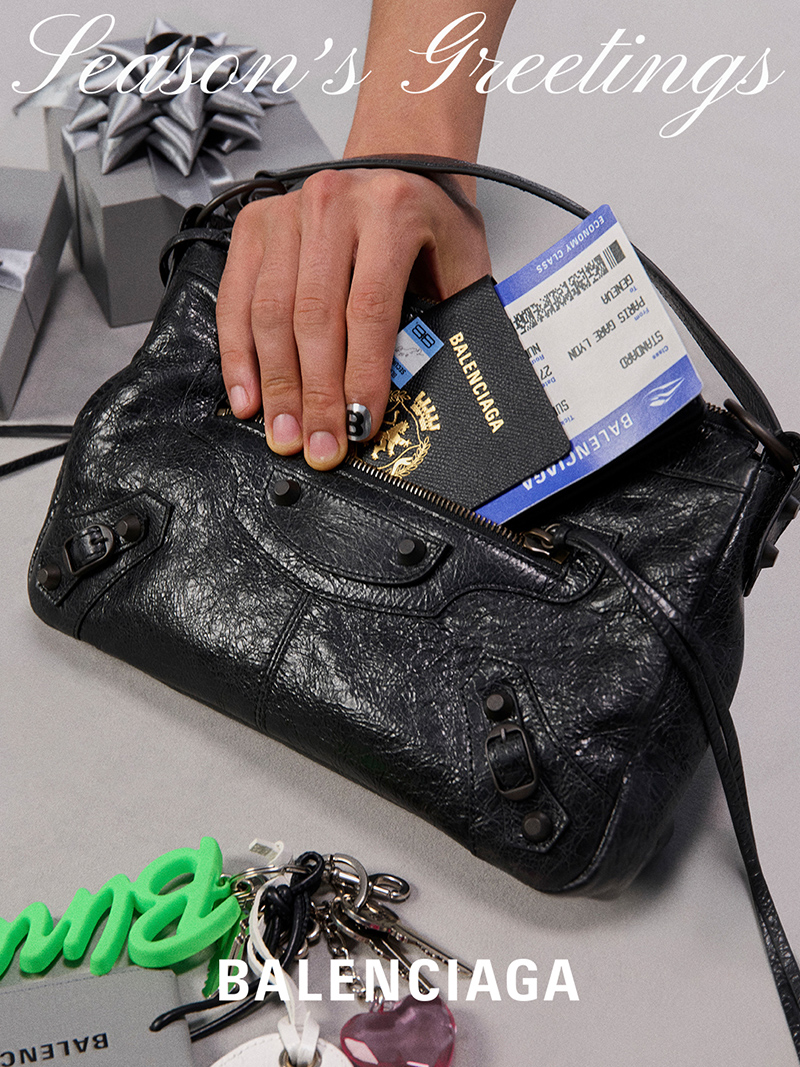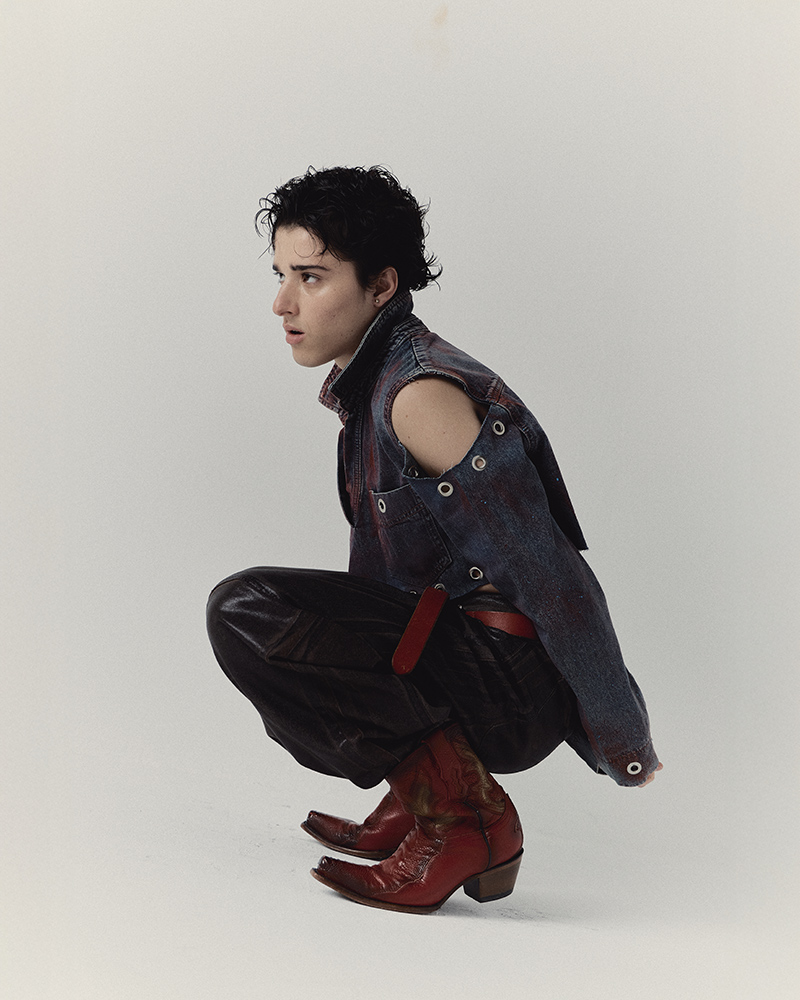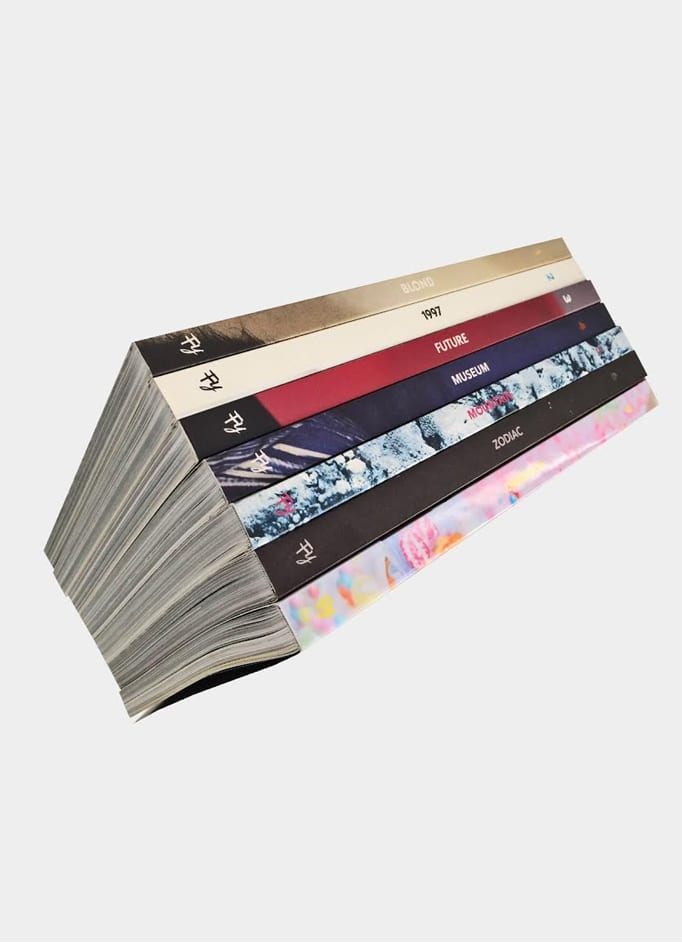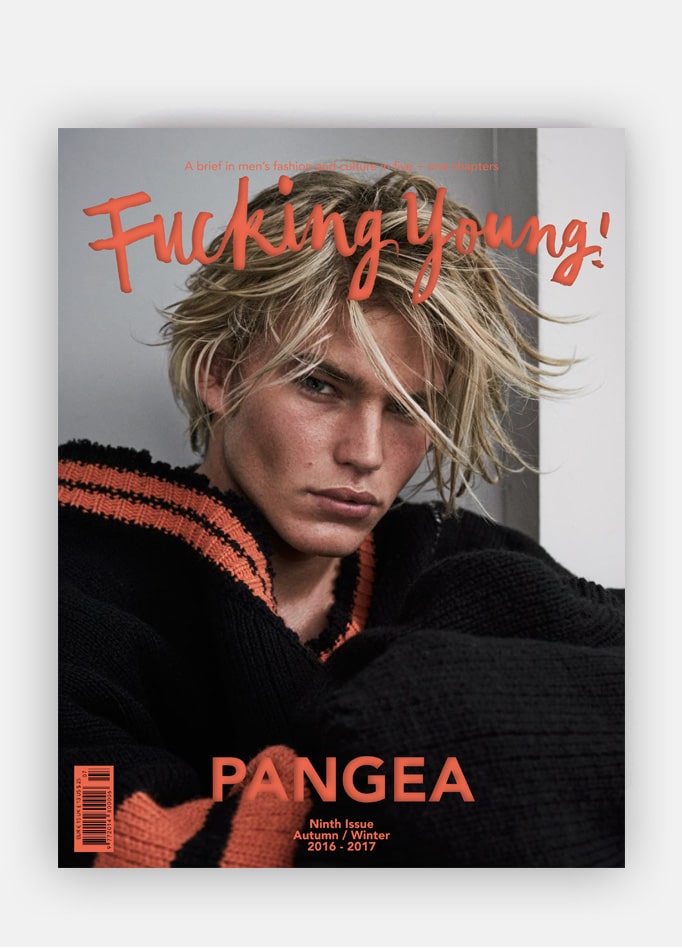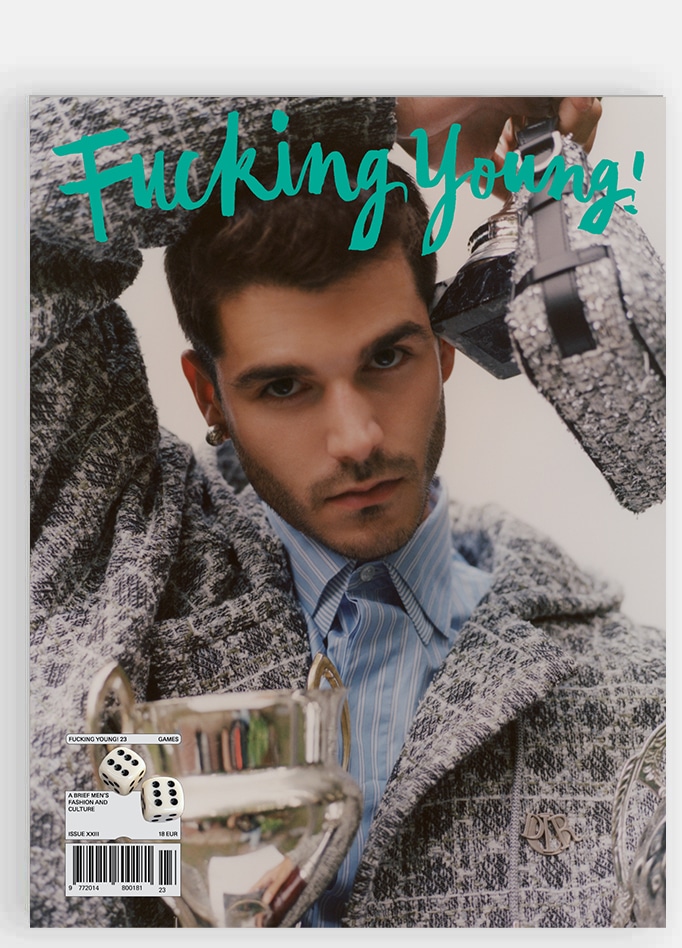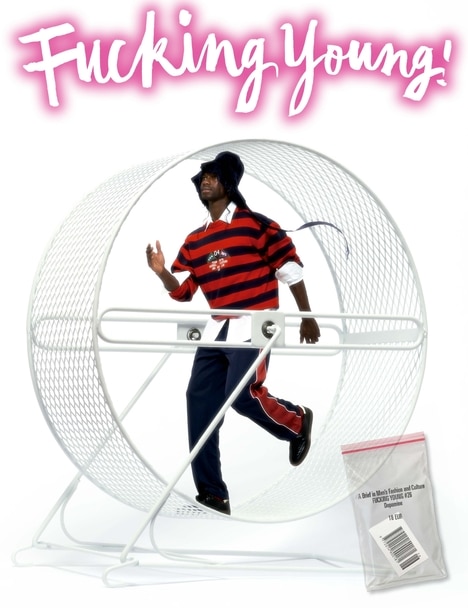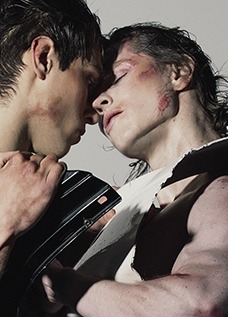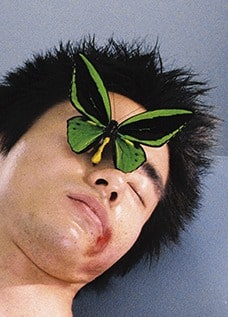Fashion is more than fabric and form—it’s a mirror of society, reflecting our deepest struggles and transformations. At 080 Barcelona Fashion, EÑAUT unveiled ECDISIS, a collection that confronts the painful tension between self-perception and the beauty standards imposed by the world around us. Through structured yet deconstructed silhouettes, piercing embellishments, and a striking interplay of textures, the designs become a visual manifesto on conformity, resistance, and the courage to embrace authenticity.
In this interview, EÑAUT delves into the inspirations behind the collection—from societal pressures to personal evolution—and how these ideas materialized in garments that both constrain and liberate. The conversation explores the balance between nostalgia and innovation, the challenges of translating emotion into design, and the role of sustainability in a collection rooted in rebirth.
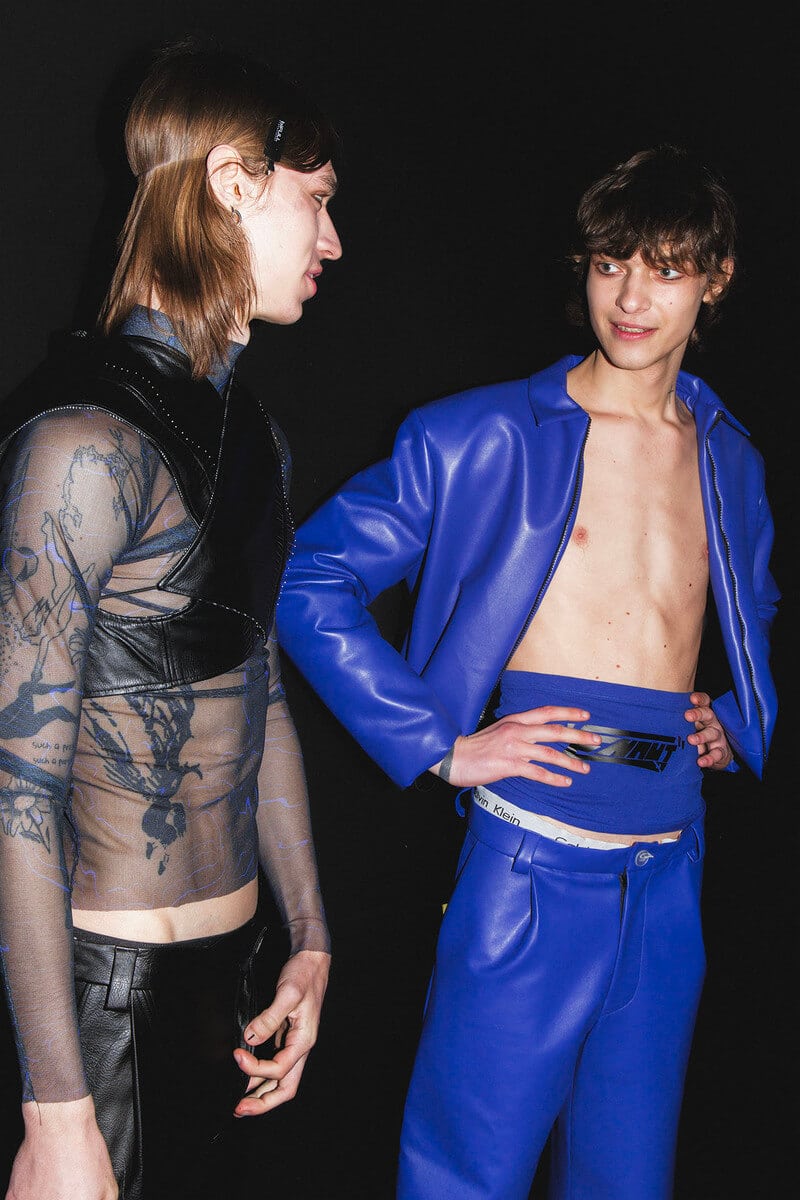
ECDISIS explores the tension between self-perception, social beauty standards, and self-compassion. What personal or societal observations inspired this collection, and how did you translate these ideas into the designs?
This collection was born from the observation of how society imposes rigid beauty standards that often lead individuals to self-inflicted harm, both physically and emotionally. We live in a world where external validation dictates our self-worth, creating a constant battle between acceptance and self-compassion. Through my designs, I wanted to expose this struggle by integrating elements that symbolize transformation and resistance. The use of structured yet deconstructed silhouettes, masks, and detailed pin embellishments represents the pressure to conform and the pain that comes with it.
The collection highlights how people harm themselves to fit into imposed molds. How do the garments reflect this struggle, and what message do you hope to convey to the audience?
The garments reflect this internal and external conflict through visual storytelling. The presence of tight, almost restrictive shapes contrasts with fluid, freeing elements to showcase the tension between oppression and liberation. By incorporating piercing-like embellishments and surgical references, we emphasize the extent to which people alter themselves to fit societal expectations. Ultimately, I want the audience to reflect on the price of conformity and encourage them to embrace their authentic selves.
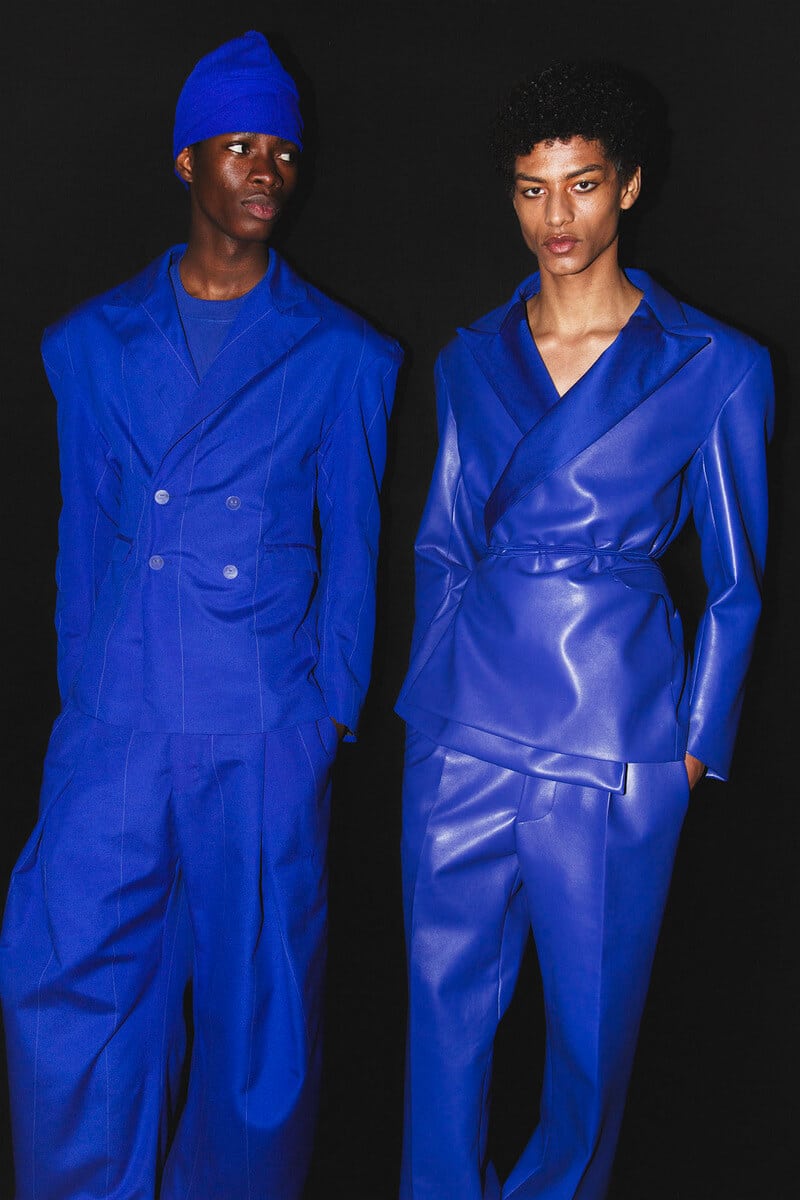
You’ve used silhouettes from your previous collection as a starting point. Why was it important to maintain this continuity, and how did you evolve these shapes to reflect new ideas?
Continuity in design allows for an organic evolution of concepts rather than abrupt changes. In my previous collection, we focused on self-acceptance, and ECDISIS expands on that idea by questioning external beauty standards. Some silhouettes have been reimagined with sharper cuts, additional layers, and intricate details that reinforce the theme of transformation. This continuity helps in creating a dialogue between past and present narratives while pushing the concept forward.
You mention that textures invite new sensations. Can you elaborate on the materials and techniques you used to create these tactile experiences?
Texture plays a crucial role in ECDISIS, as it enhances the emotional depth of the collection. We experimented with rigid structures juxtaposed with soft, almost second-skin materials to symbolize vulnerability beneath a hardened exterior. Techniques like fabric manipulation, embroidery, and layering were used to create surfaces that feel both protective and fragile. The combination of rough, unfinished edges with smooth, polished textures represents the duality of self-perception.
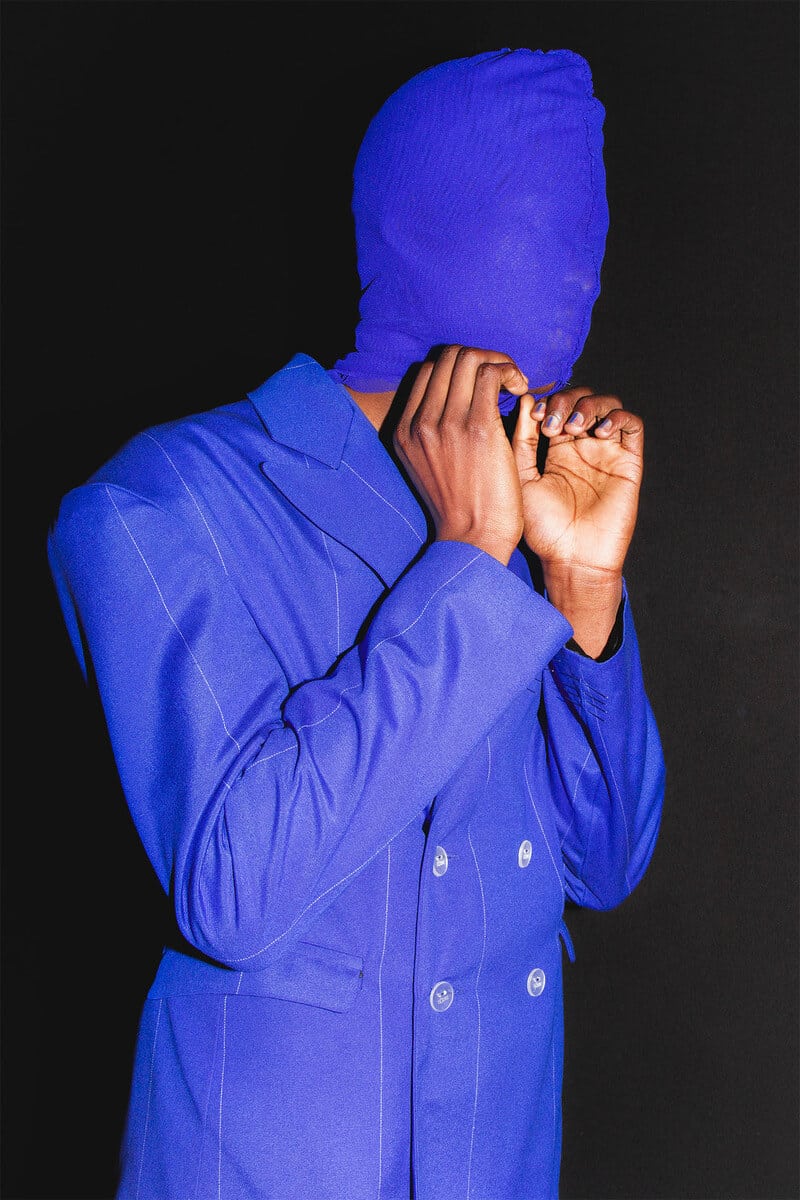
The collection aims to create a narrative where the past and future coexist. How do you balance nostalgia and innovation in your designs?
For me, nostalgia and innovation must coexist naturally. I draw inspiration from past techniques and silhouettes but reinterpret them with unconventional materials and modern tailoring. The challenge is to evolve without losing the essence of my design philosophy. This vision extends beyond the runway—our upcoming online store will also reflect this balance, offering timeless pieces with a contemporary edge.
What were the biggest challenges you faced while designing ECDISIS, and how did you overcome them?
The biggest challenge was transforming a deeply personal concept into something universally relatable. It required precise choices in materials and silhouettes to ensure clarity without being overly literal. Another challenge was balancing structure and fluidity in the garments, which we refined through continuous experimentation and collaboration with artisans. This same dedication to craftsmanship will be reflected in our soon-to-launch online store, making our vision more accessible.
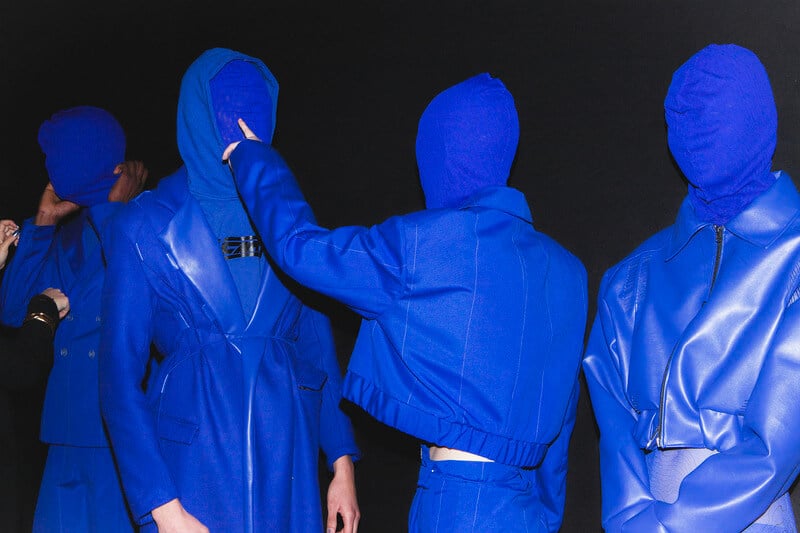
Does ECDISIS incorporate any sustainable or ethical practices? If so, how do these align with the collection’s themes?
Sustainability is fundamental to my work. ECDISIS incorporates recycled fabrics, organic materials, and ethical production processes to align with our commitment to responsible fashion. The concept of transformation and rebirth ties directly to sustainability—giving new life to materials and reducing waste reflects the need for conscious consumption. Ethical labor practices and local craftsmanship are also key pillars of the brand.
After exploring identity and beauty standards in ECDISIS, are there other themes or emotions you’re eager to explore in future collections?
Identity and self-perception will always be central themes in my work, but I’m also interested in exploring the intersection of human emotion and technology. The way we connect and express ourselves in an increasingly digital world presents new narratives to explore. I want to continue creating collections that provoke thought and inspire meaningful conversations.
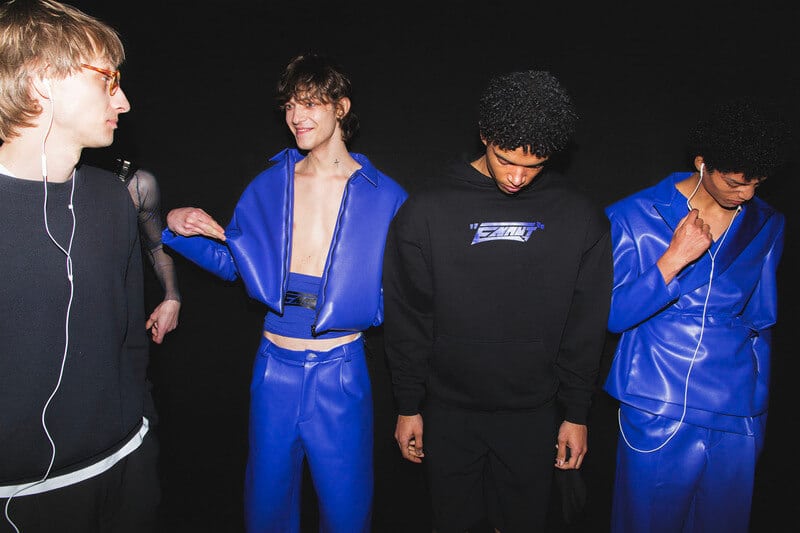
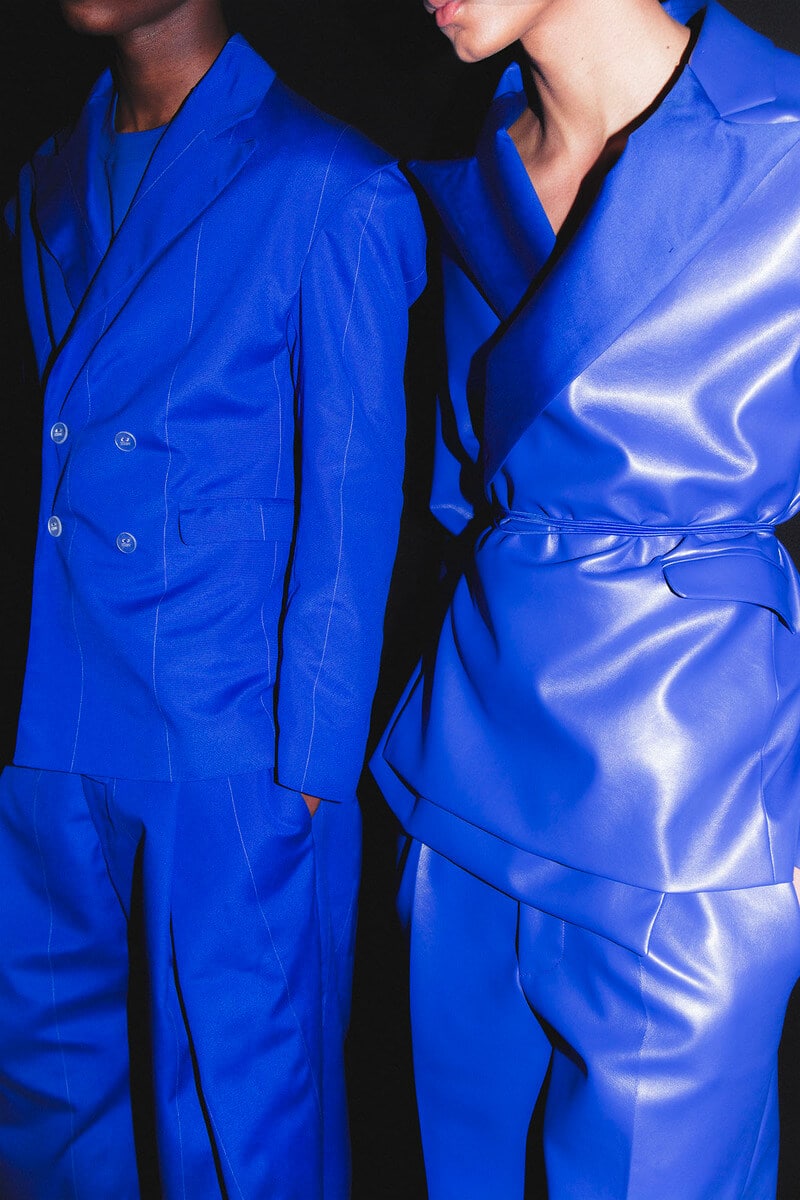
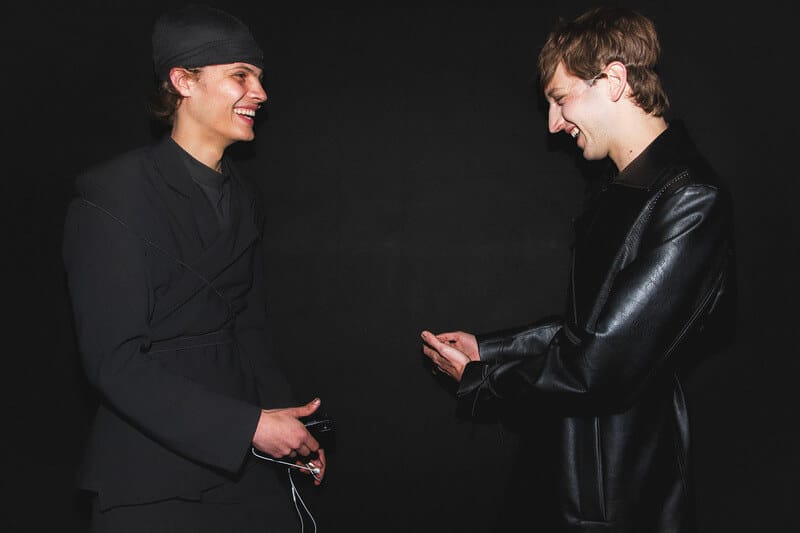
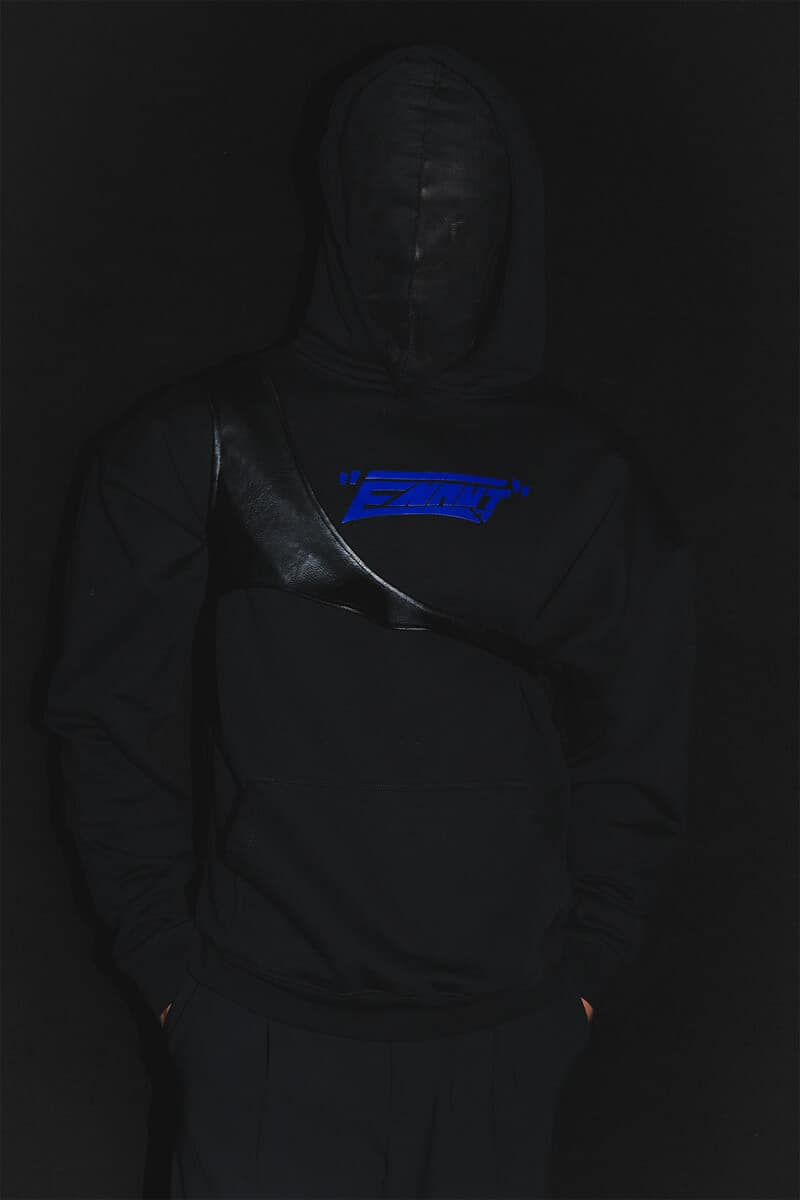
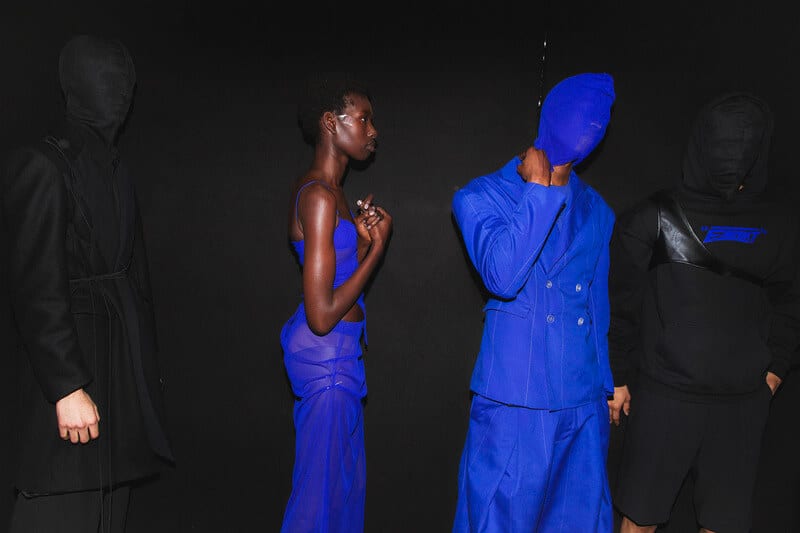
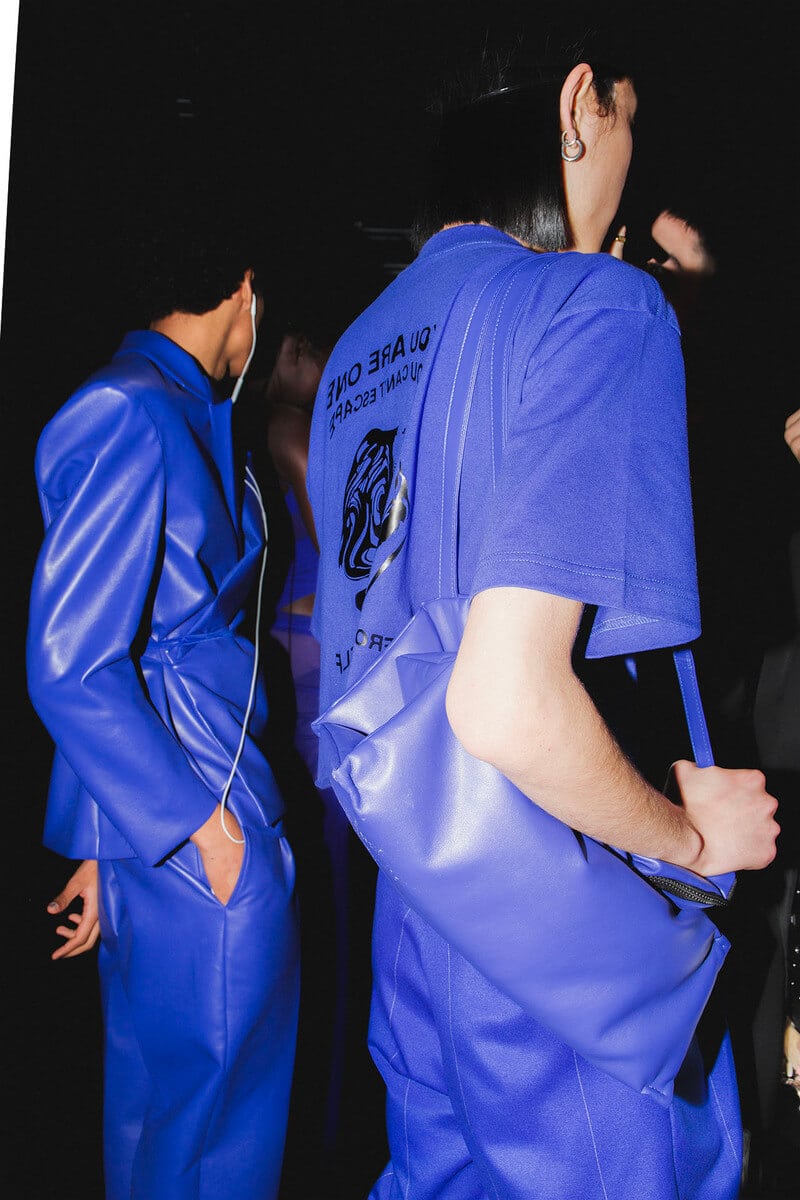
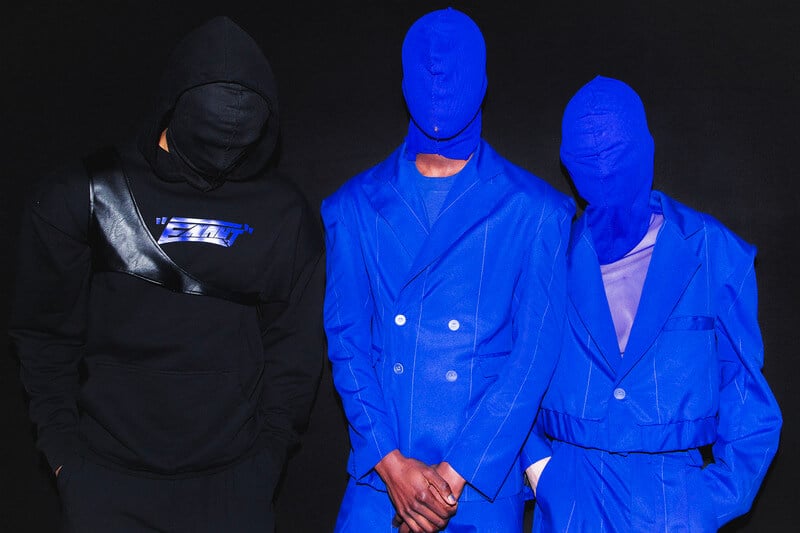

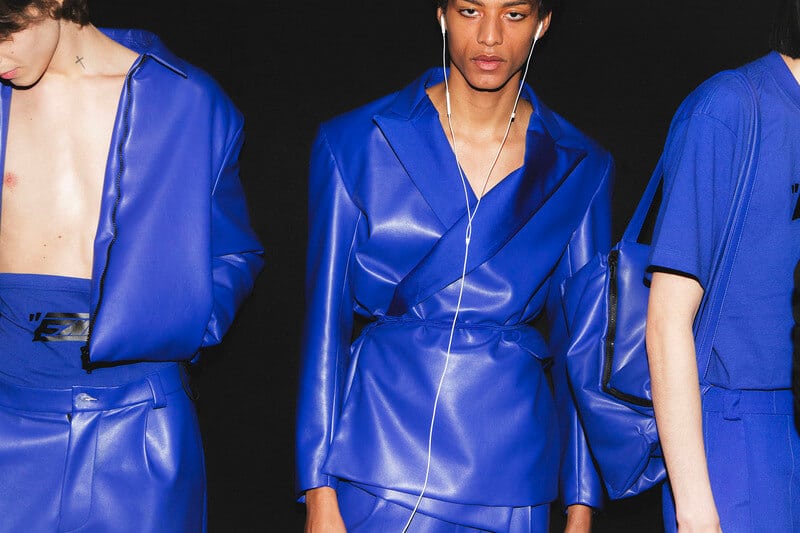
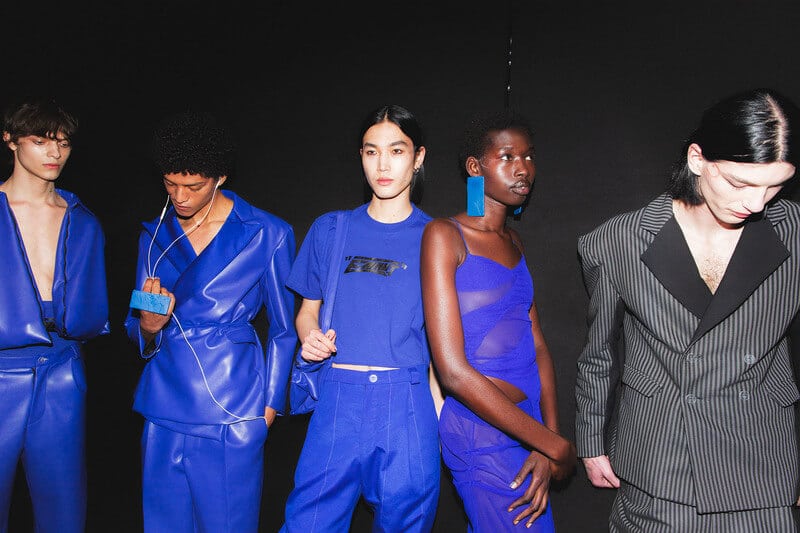
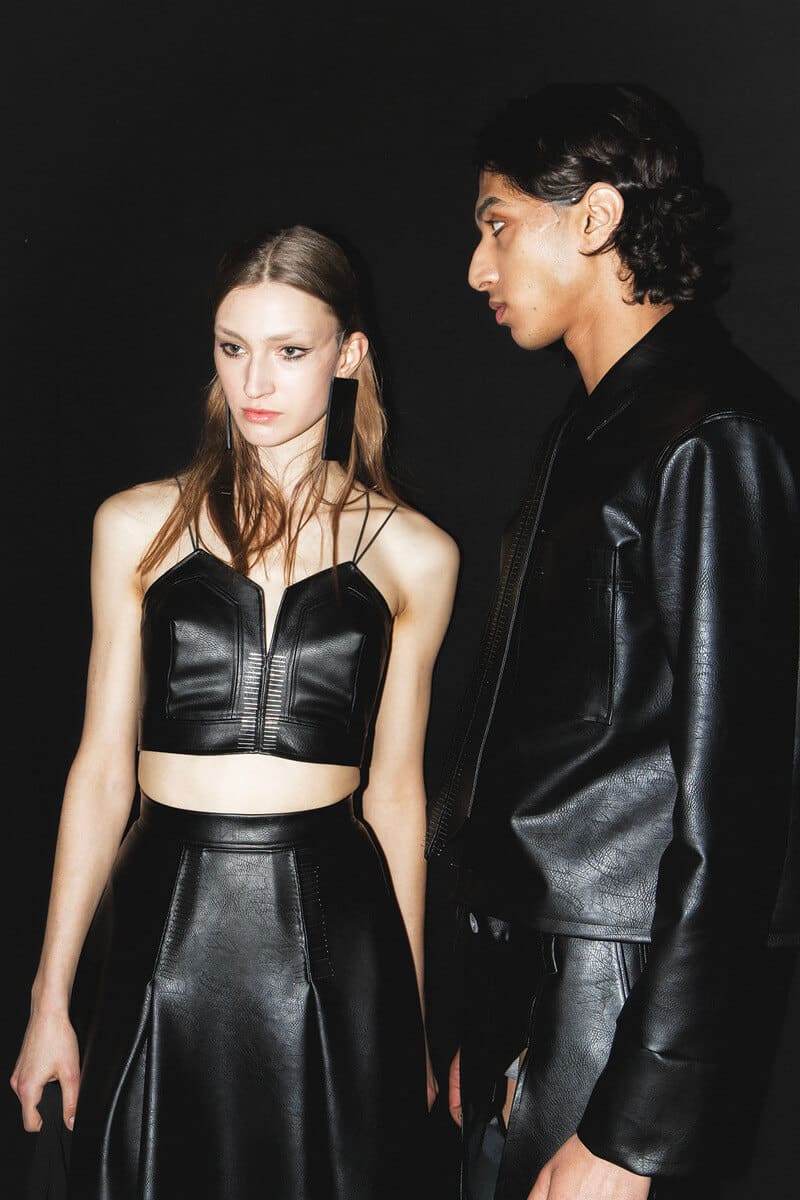
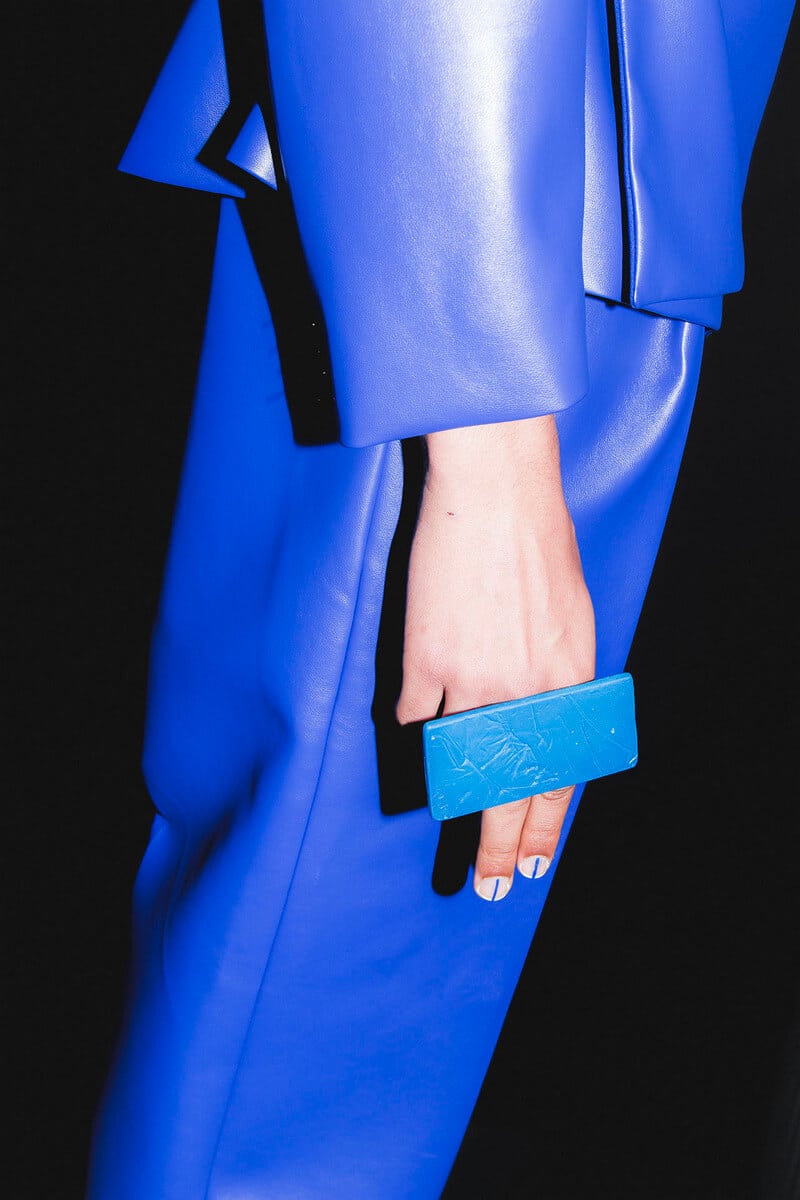
Photography by Ángela Ibáñez for FY!
